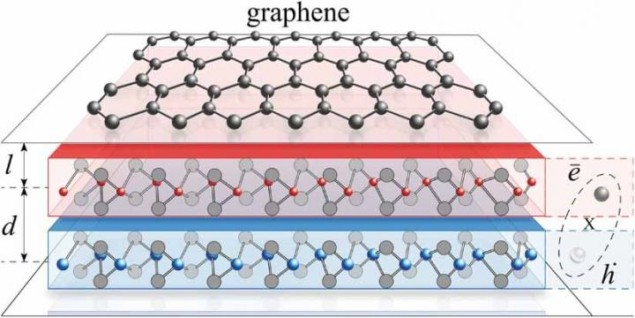
Graphene can be made to superconduct by placing it next to a Bose–Einstein condensate – a form of matter in which all the atoms are in the same quantum state. According to the theorists who discovered it, this new type of superconductivity stems from interactions between the electrons in graphene and quasiparticles called “bogolons” in the condensate. If demonstrated experimentally, the work could make it possible to develop new types of hybrid superconducting devices for applications in quantum sensing and quantum computing.
Conventional superconductivity occurs when phonons – quasiparticles that arise from vibrations in a material’s crystal lattice – cause electrons in the material to pair up despite their mutual electromagnetic repulsion. If the material is cooled to sufficiently low temperatures, these paired electrons (known as Cooper pairs) can travel through it without any resistance.
Bose–Einstein condensates (BECs) form when bosons, or particles with integer quantum spin, are cooled until they are all in the same quantum state. Within this special “fifth state of matter”, quasiparticles called Bogoliubov excitations can develop. Named after the Russian physicist Nikolaï Bogoliubov, who was the first to provide a theoretical description of them, these quasiparticles are usually known as bogolons. Ivan Savenko, who led the research at the Institute for Basic Science (IBS) in Korea, explains that bogolons are similar to phonons in the sense that they also serve as mediators for electron-electron attractions.
Good conductor, bad superconductor
Graphene – a honeycomb-like lattice of carbon just one atom thick – has several unique electronic properties. Many of them stem from the fact that it is a semimetal with no energy gap between its valence and conduction bands. In the region where these two bands meet (known as the Dirac point), the relationship between the energy and momentum of charge carriers (electrons and holes) in graphene is described by the Dirac equation, rather than the standard Schrödinger equation as is the case for most crystalline materials. The presence of these unusual band structures (known as Dirac cones) enables the charge carriers in graphene to behave like massless particles.
This effective masslessness makes the electrons in graphene highly mobile, meaning that the material is a very good conductor. However, it is only weakly superconducting because the density of electronic states near its Dirac point is small. This means that graphene must be cooled to extremely low temperatures before it becomes a superconductor – in line with a rule that “good” conductors (including metals like gold and copper as well as graphene) make “bad” superconductors.

Twisted trilayer graphene could help make high-temperature superconductors
Bogolon pairs
Savenko and his colleagues have now found a way to make graphene break this rule. In their calculations, they showed that if graphene is placed in the vicinity of a BEC, the interactions between single bogolons and electrons (which have half-integer quantum spin and are therefore fermions rather than bosons) are quite weak. However, the situation changes once pairs of bogolons are involved. “In this case, we can achieve robust, relatively high-temperature superconductivity,” Savenko tells Physics World, adding that the team calculated a superconducting transition temperature of 70 K.
The researchers, who report their work in 2D Materials, are now exploring whether other boson systems could also make graphene superconduct. These other systems may include polaritons and magnons, Savenko says.



